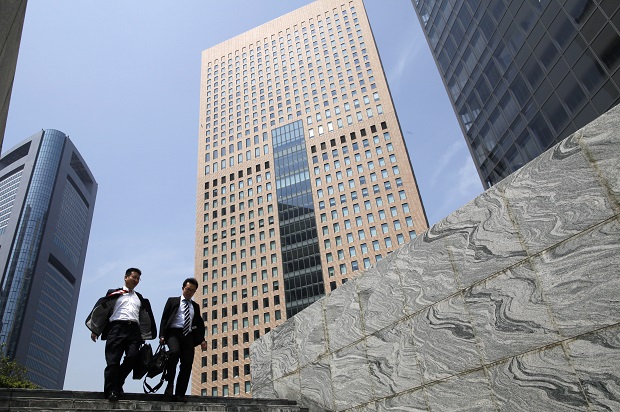
In this April 28, 2015 photo, businessmen walk by high-rise building in Tokyo. Japan has reported its economy expanded at a faster-than-expected 2.4 percent annual rate in January-March, 2015, thanks largely to a rebound in housing construction. The government reported Wednesday, May 20, 2015, that preliminary estimates show the worlds third biggest economy expanded 0.6 percent from the previous quarter. It was the second straight quarter of growth following a recession in mid-2014 brought on by a sales tax hike that crippled private demand. AP
TOKYO, Japan — Japan’s economy grew at a faster pace than initially estimated in the January-March quarter, expanding at a 3.9 percent annual rate on stronger consumer and corporate spending.
The revision announced Monday by the Cabinet Office was sharply higher than the 2.4 percent pace initially reported. On a quarterly basis, the economy grew 1 percent, compared with the initial estimate of a 0.6 percent increase.
Strong private demand in residential and corporate spending helped push growth higher, with corporate investment revised to a 2.7 percent quarterly increase, from the 0.4 percent preliminary estimate.
The government has pointed to the stronger growth as a sign the recovery is gaining strength.
Rising inventories also contributed to the upward revision, however, and many economists have forecast that growth slowed in the current quarter on slowing consumer spending and industrial output.